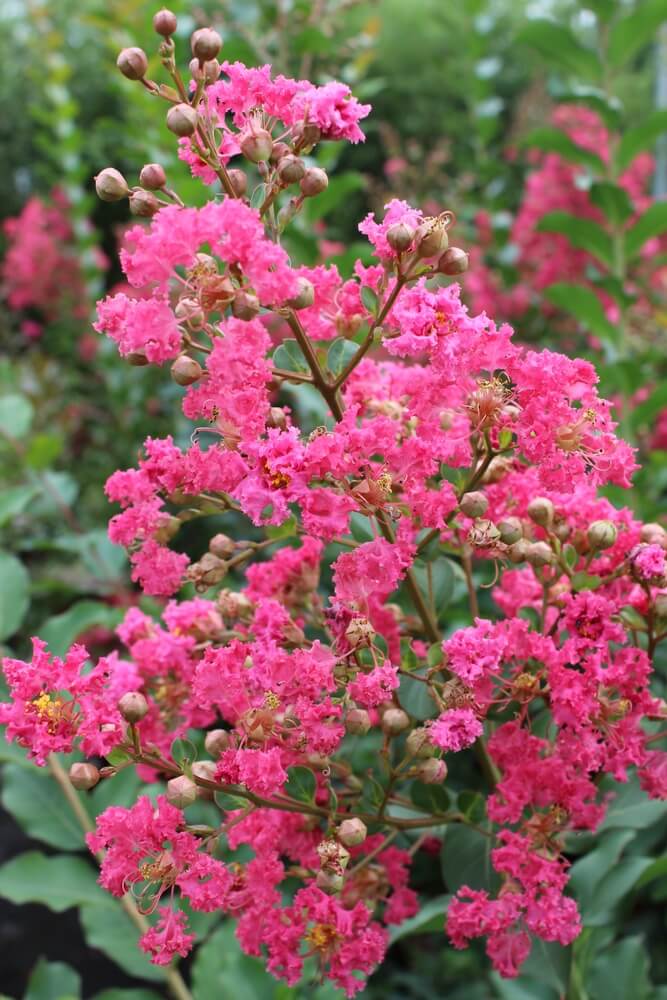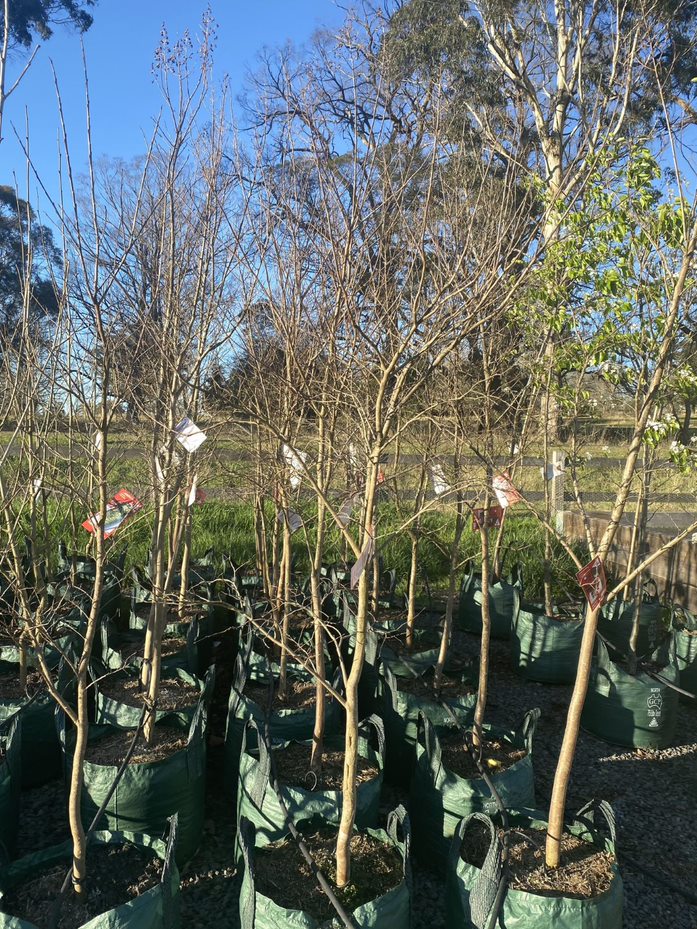Lagerstroemia indica x fauriei ‘Tuscarora’ 100L bag TREE DECIDUOUS
$695.00
The genus Lagerstroemia, commonly known as crape myrtle, consists of about 50 species of deciduous and evergreen trees and shrubs, native to Asia, Australia, and North America. They are known for their ornamental value, particularly their attractive foliage and showy flowers. Here are some horticultural notes on the genus Lagerstroemia:
Climate and soil requirements: Lagerstroemia prefer a warm to hot climate with moderate to high rainfall. They grow best in well-draining, fertile soil, with a pH range of 5.5 to 7.5.
Light requirements: Lagerstroemia prefer full sun to partial shade.
Watering: Lagerstroemia require regular watering, especially during the first few years after planting. Once established, they are fairly drought tolerant.
Fertilization: Lagerstroemia benefit from regular fertilization, especially during the growing season. A slow-release fertilizer with a balanced NPK ratio is recommended.
Pruning: Lagerstroemia require minimal pruning, but dead or damaged branches should be removed as soon as possible. Pruning should be done in late winter or early spring, before new growth appears.
Propagation: Lagerstroemia can be propagated by seed or cuttings. Propagation by cuttings is the most common method and produces plants that are true to the parent.
Pests and diseases: Lagerstroemia are relatively pest and disease resistant, but may occasionally be affected by aphids, scale insects, and fungal diseases. Regular inspection and treatment can help prevent and control these issues.
Landscape use: Lagerstroemia are popular ornamental plants and are commonly used in warm to hot climates, parks, and gardens. They provide attractive, often oval-shaped foliage in shades of green, and showy flowers in shades of pink, red, purple, or white, which are followed by ornamental, papery fruit capsules. They can be used as specimen plants, hedges, or espaliers, and their unique foliage and flowers also add interest to landscapes. In addition, some species of Lagerstroemia have traditional medicinal uses in their native range, particularly for their bark and leaves, which are believed to have anti-inflammatory and antidiabetic properties.
Mature Height: 4-10m
Mature Width: 2-4m
Position: Full Sun
Soil Type: Any, Well Drained
2 in stock
Description
- Family Name:Lythraceae
- Origin:Asia
- Characteristics:
- Foliage Colours:Brown, Green, Orange, Red
- Flower Colours:Pink
- Flower Fragrant:No
- Flowering Season:Autumn, Summer
- Fruit:Insignificant
- Landscape Use(s):
Container / Pot, Cottage Garden, Courtyard, Feature, Foliage Feature / Colour, Formal Garden, Low Water Garden, Mass Planting, Shade Tree
- Pest & Diseases:
Generally Trouble Free
- Plant Care:
Annual Slow Release Fertiliser, Keep Moist During Dry Periods, Mulch Well
- Requirements:
- Growth Rate: Moderate
- Maintenance Level: Low
- Water Usage: Low
- Tolerances:
- Drought: High
- Frost: High
- Wind: High
- Cultural Notes:
NOTE: Does best in a well drained slightly acidic soil. Keep the water up whilst tree establishes. If required pruning can be done during winter, although usually not required.



